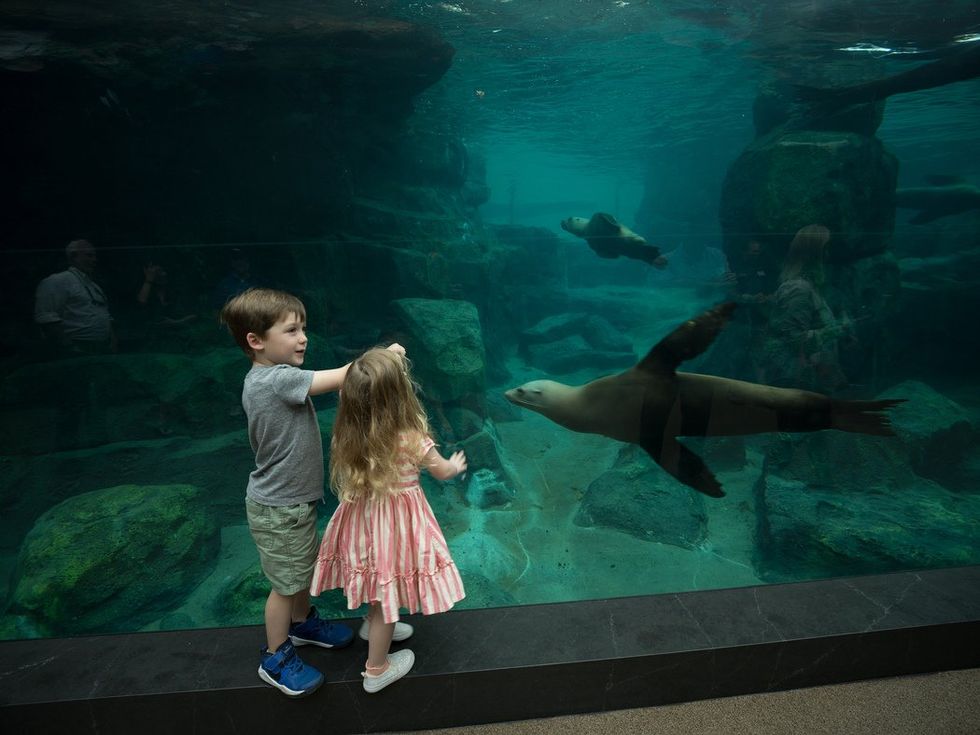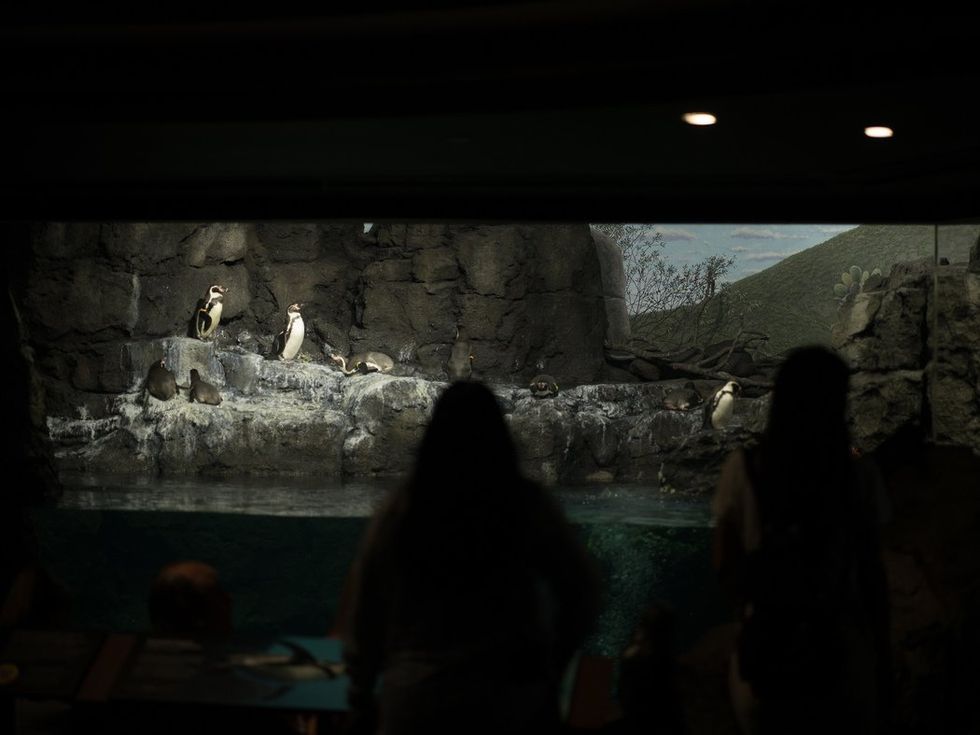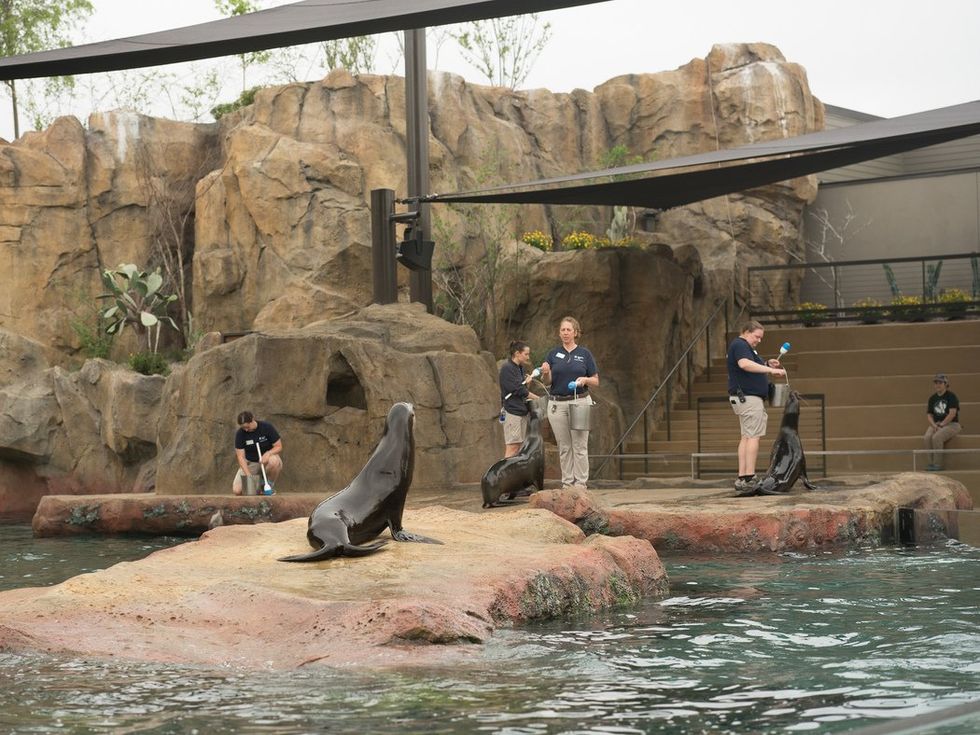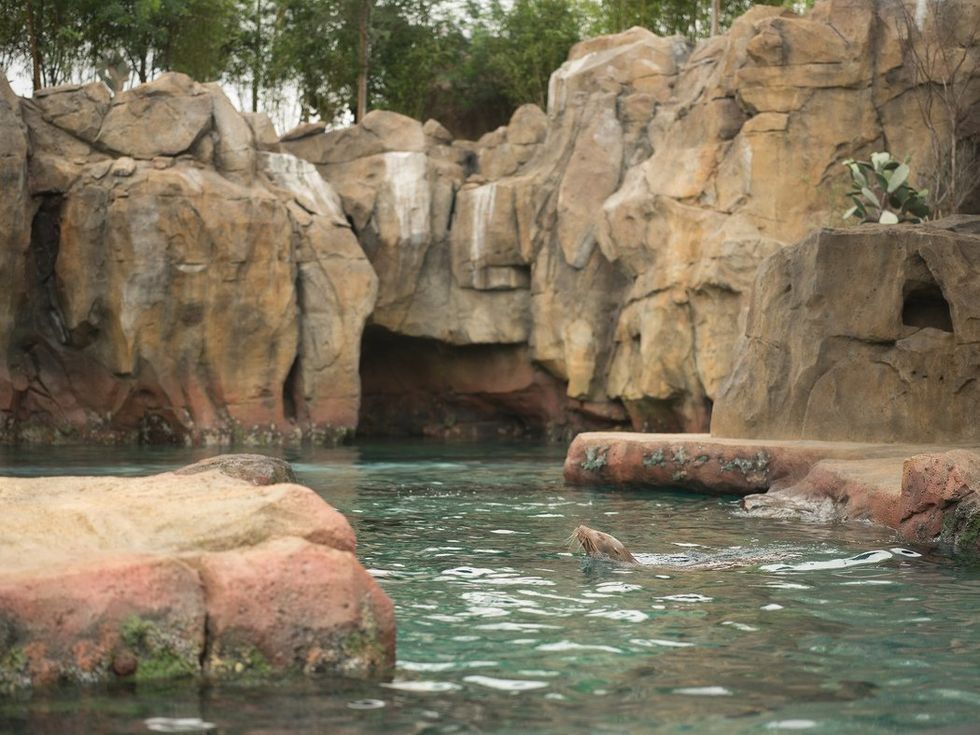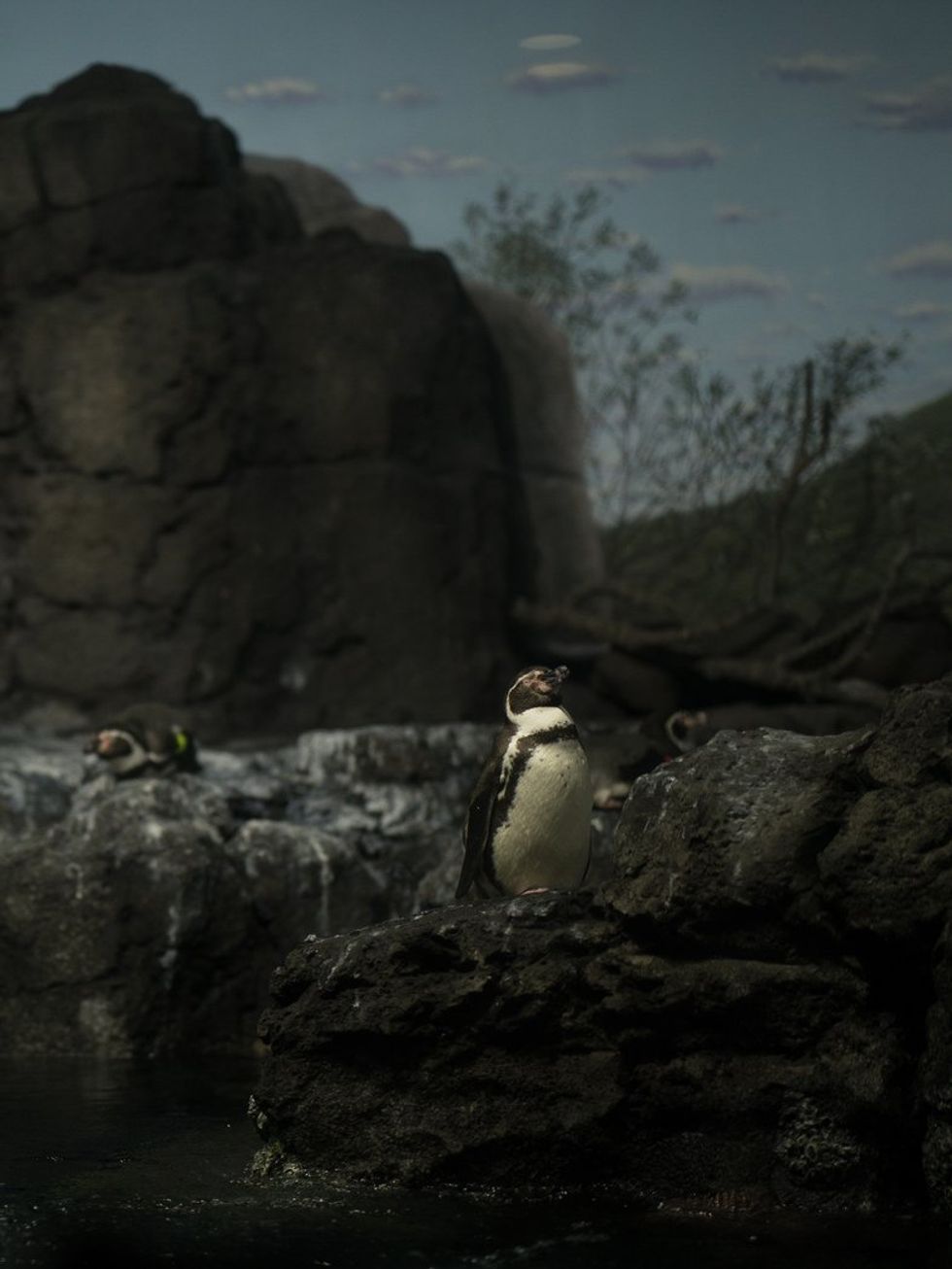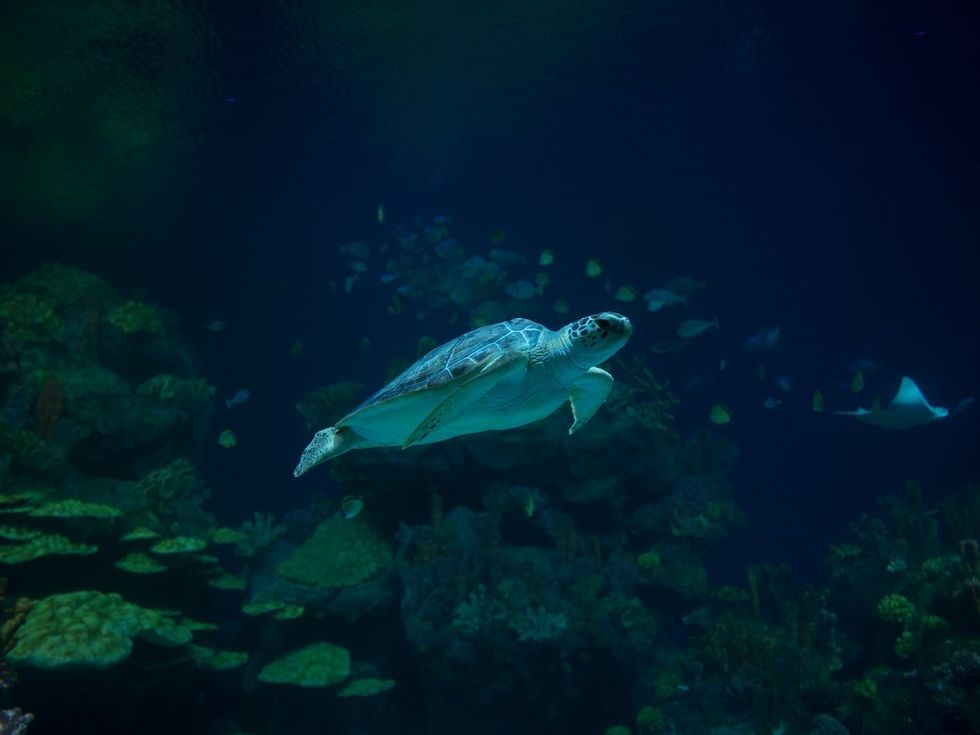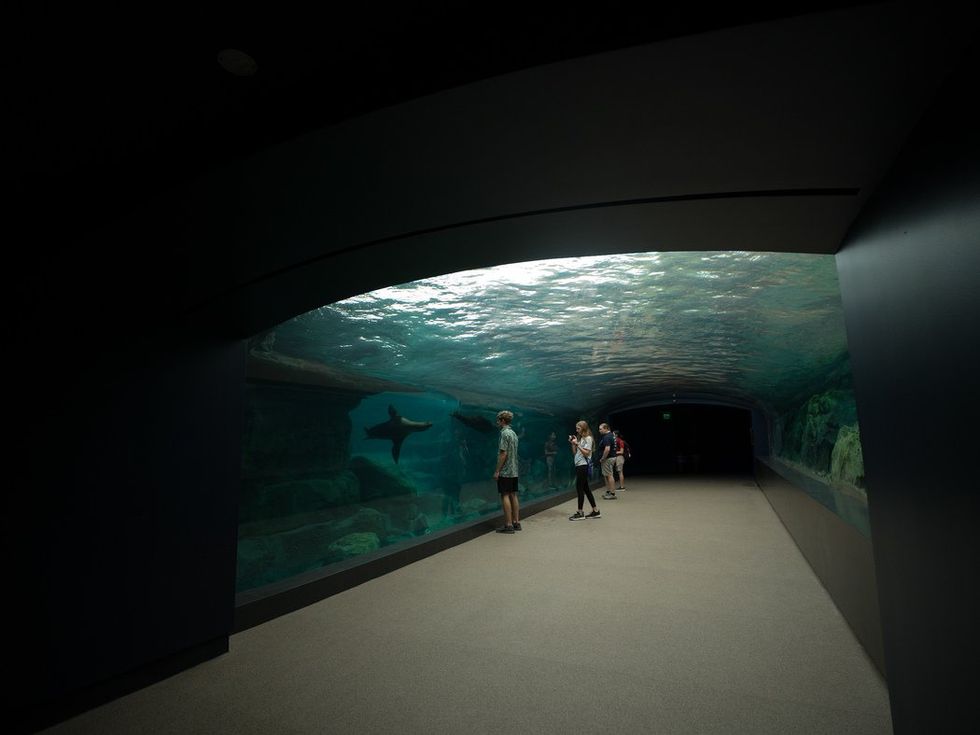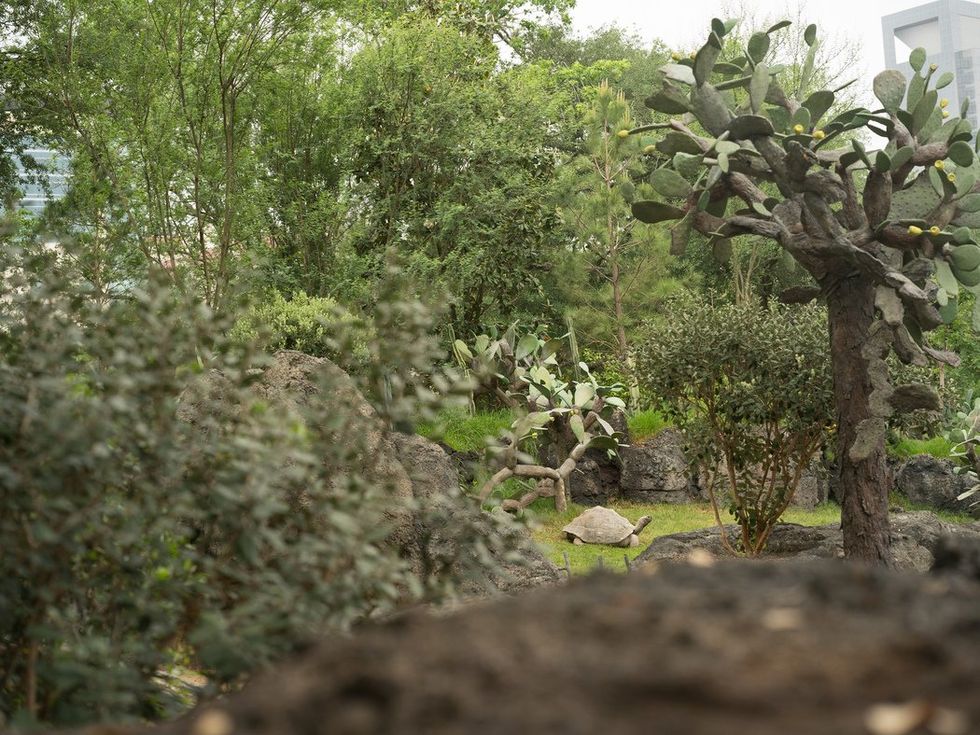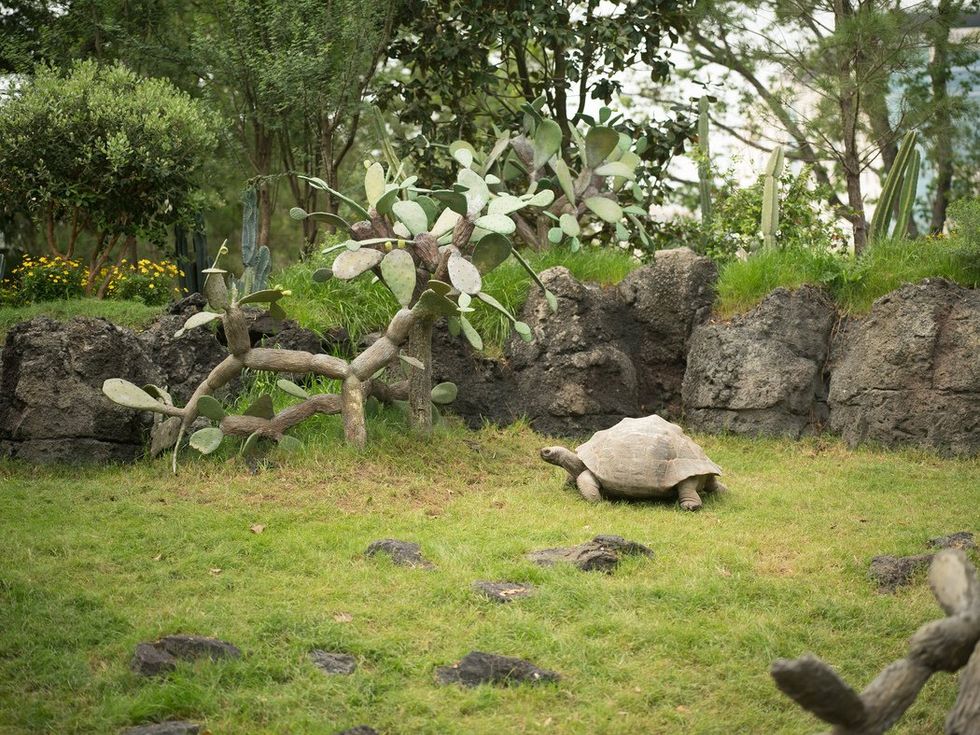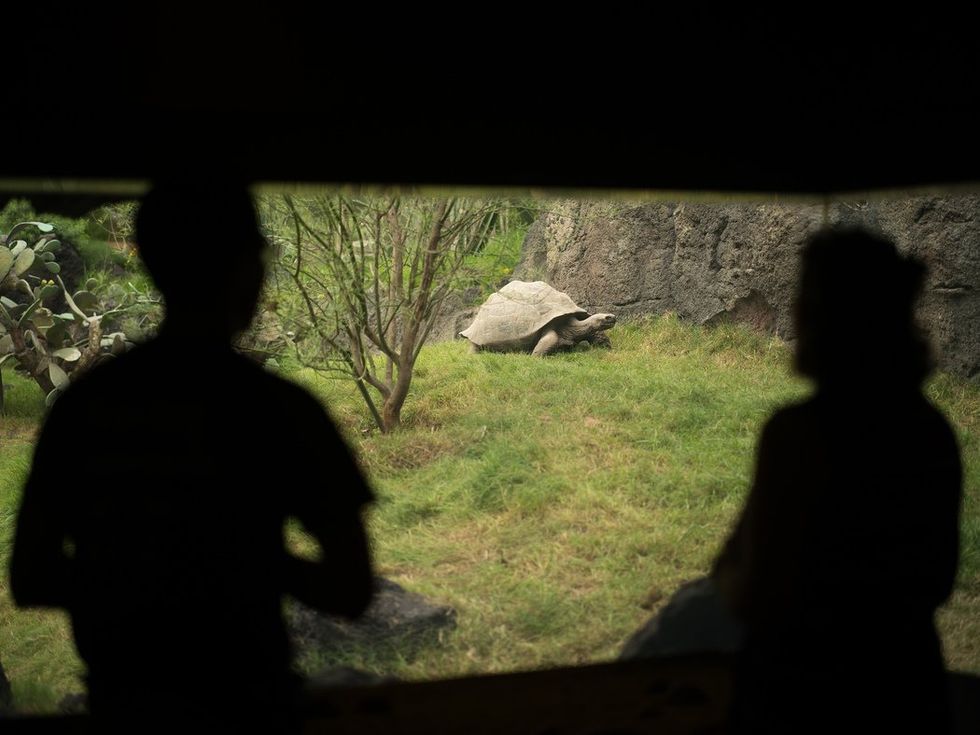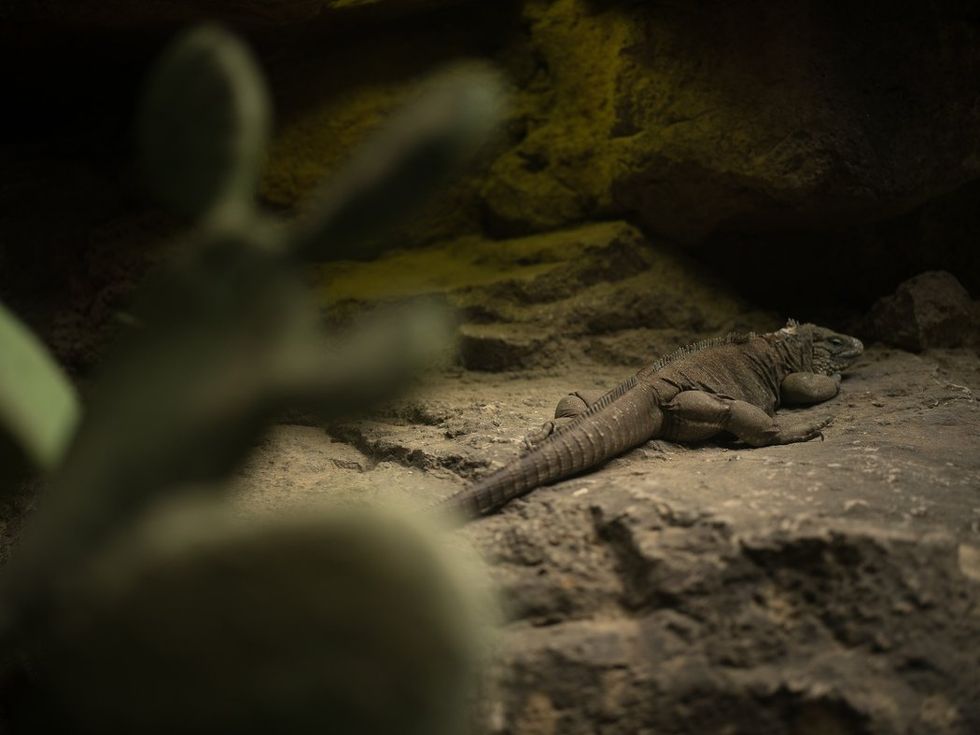(sea) lions, penguins, and tortoises — oh my!
Sneak peek of the world's first Galápagos Islands exhibit set to dazzle visitors at the Houston Zoo
The Houston Zoo is set to unveil its new exhibit based on the Galápagos Islands to the public on Friday, April 7.
Described as the first major conservation-focused experience based on the Galápagos Islands in the world, the immersive archipelago brings the Galápagos Islands — located off the coast of Ecuador — to the heart of Houston.
Visitors can soon meet the zoo's newest residents: gregarious, curious, and playful sea lions, charismatic (and well dressed) Humboldt penguins, and massive — and strangely calming — giant Galápagos tortoises.
Meanwhile, as they traverse the new archipelago exhibit, explorers can then voyage underwater, as a 40-foot-long acrylic tunnel leads to an aquatic world full of green sea turtles, blacktip reef sharks, bonnethead sharks, cownose stingrays, other vibrant fish — and the lovably nosy visiting sea lions.
Why would the zoo invest years and millions of dollars creating an archipelago based on the faraway Galápagos Islands? Simply put, perhaps no other ecosystem on the planet showcases the Earth's diversity of flora and fauna — and the need to preserve all of it for generations to come.
Iconic scientist, researcher, and author Charles Darwin helped hone his theory of natural selection based on his time at the Galápagos Islands. Life on the island is largely home-grown: research reveals that some 97 percent of land mammals and reptiles, 80 percent of land birds, and more than 30 percent of the plants are endemic. That means they exist nowhere else on earth — and also means they are among the world’s most endangered species in a time when species are quickly disappearing.
With preservation, protection, and conservation in mind, the zoo partnered with the nation of Ecuador and the Charles Darwin Foundation to create the exhibit. Beyond the obvious highlights of diverse, engaging wildlife and landscapes, the exhibit is a reminder of man's footprint and effect on the planet.
Here's what to expect when traveling to the Galapagos Islands — by way of the Houston Zoo.
Beach vibes with sea lions
Always a crowd favorite, some of nature's most playful beings star in the exhibit's Sea Lion Coast. Here, visitors can catch sea lions doing the hard work of sunning themselves before taking a splash in the pool. Cliffs and a meadow lead to giant Galápagos tortoises grazing on grasses, or trudging in muddy puddles, and exuding a general sense of chill.
A short jaunt through a crevasse in the lava hillside leads to blue iguanas sunning themselves (see a trend here?) on rocky ledges. Blue iguanas and four species of iguanas found in the Galápagos share similar evolutionary origins and threats to their survival, the zoo notes.
Under the sea
Capturing the island life, the archipelago features a wave-sculpted sea cave with split-level views of those fun-loving sea lions making a splash or taking snooze — and occasionally training with enrichment activities. Quirky and colorful Sally Lightfoot crabs can be spotted scurrying in the rocks.
Then guests can submerge by simply stepping into the 40-foot-long acrylic tunnel where they’ll meet the resident marine life and occasionally spot sea lions swimming overhead.
Sea life thrives in the new new 290,000-gallon One Ocean aquarium, which is crafted to give a feeling of moving indefinitely to the open ocean beyond. Underwater coral reef structures of the Galápagos reef merge with volcanic boulders as those green sea turtles, blacktip reef sharks, bonnethead sharks, cownose stingrays, and other fish cruise, hide, and peek.
A sea of powerful imagery
Meant to represent the human waste that threatens Earth's oceans and wildlife, a dramatic room featuring striking images of sea life also features glass cylinders containing three types of plastic waste so damaging to ocean wildlife. The good news, however, is that these columns filled with plastic bags, straws, and bottles represent the amount of waste not entering the environment — thanks to the zoo eliminating those products, press materials note.
A shimmering wall aquarium of jelly fish (known as sea nettles) remind visitors that sea animals like sea turtles often mistake floating plastic as jelly fish, leading to disastrous consequences.
Penguins on parade
Yet another aquarium, this one nestled in an opening in the lava tunnel wall, showcases giant sea horses — some up to 1 foot tall — drifting along a bed of sea stars and sea cucumbers. Visitors then trek along the lava tunnel floor, round the corner, and come face to face with the energetic and jovial playful Humboldt penguins. Fans can snap pics and video as the tuxedoed sea birds waddle along a volcanic rock beach and quickly dive into the pool. The Humboldt penguins — akin to the rare Galápagos penguins — are a first for Houston.
By the numbers, the zoo's new archipelago boasts (per press materials):
• More than 765,000 gallons of recirculating water in three state-of-the art systems
• A 360-square-foot., 5.5-inch-thick acrylic window into the One Ocean aquarium
• More than 1,275 trees, shrubs, grasses, and cacti, replicating the arid and forested landscapes of the Galápagos
• 25 artificial tree cacti created by the zoo’s in-house artisans, meant to represent the Galápagos flora
• Nearly 600 individually fabricated corals, all representing the eight different species found in the ocean surrounding the Galápagos Islands
• More than 700 lineal feet of visitor pathway; notably for summer months, 640 of that is space is in air-conditioned comfort
• Some 77,600 square feet of highly detailed lava rock formations, which immerse visitors in the lush, dynamic Galápagos animal habitat
Portions of ticket sales, the zoo adds, aid in its partnership with several Galápagos and marine conservation programs to protect the wild counterparts of the species in the Galápagos exhibit. These programs include tagging and observing Galápagos sea turtles, as well as aiding sea lions, penguins, and other marine wildlife.
